Propagate Lavender Cuttings This Summer With Emily Cupit’s 6 Step Guide
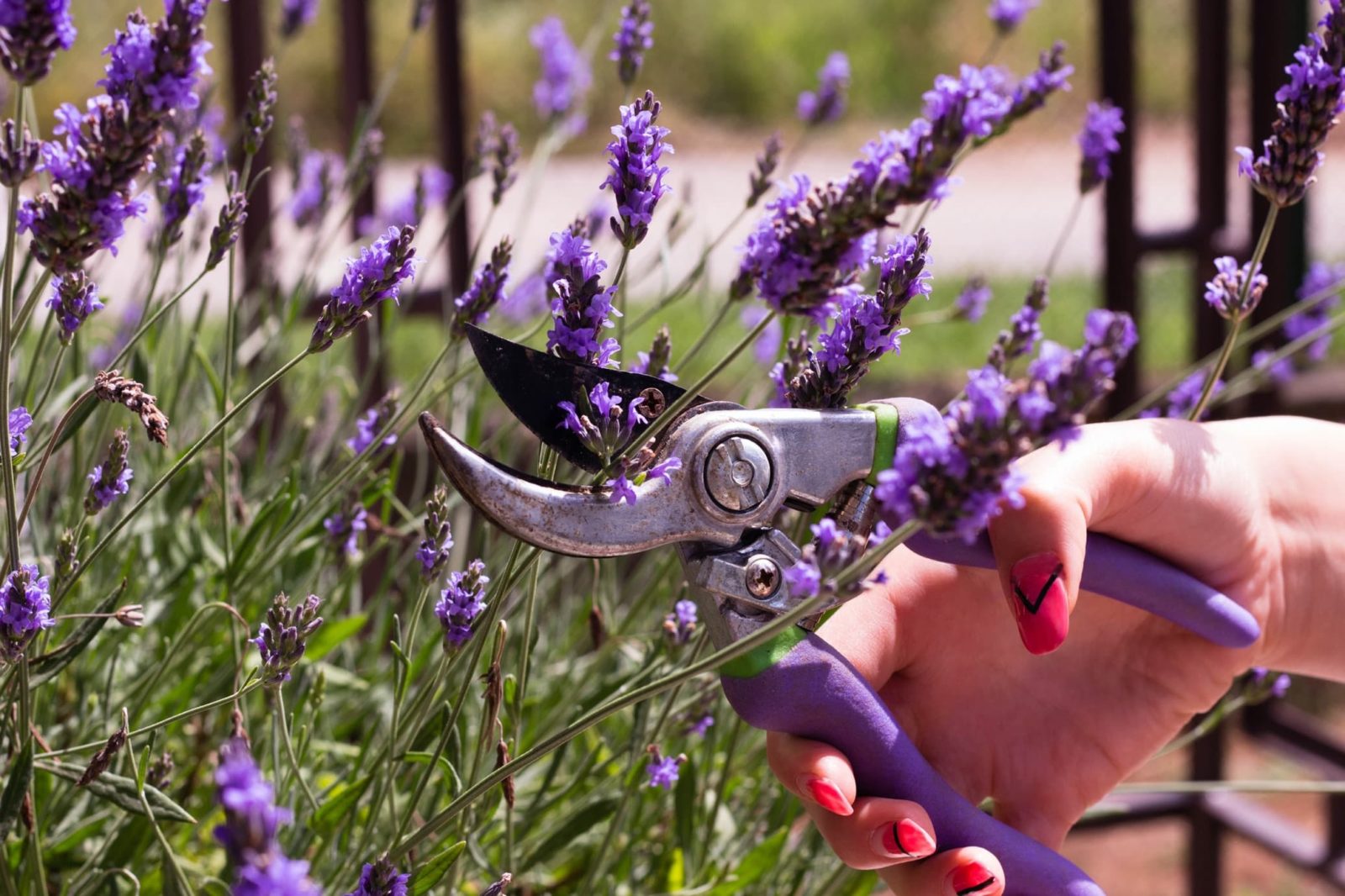

Elizabeth is a Permaculture Garden Designer, Sustainability Consultant and Professional Writer, working as an advocate for positive change. She graduated from the University of St. Andrews with an MA in English and Philosophy and obtained a Diploma in Applied Permaculture Design from the Permaculture Association.
Reviewed By ROY NICOL

Roy is a Professional Gardener and Horticultural Consultant, specialising in large garden year-round maintenance and garden development. He is an RHS Master of Horticulture and uses his research in the application of no-dig methods in ornamental garden settings. Roy has been a Professional Gardener for more than six years and is a member of the Chartered Institute of Horticulture, Professional Gardener's Guild and Association of Professional Landscapers (Professional Gardener).
Contributions From EMILY CUPIT

Emily is a Gardening Writer, Photographer and Videographer from Derbyshire, UK. She is the Founder of Emily's Green Diary - a community of more than 75,000 people who share in her gardening journey.
IN THIS GUIDE
LAVENDER GUIDES
Companion Plants
Cuttings
French Lavender
Harvesting
Lavender Hedging
Pruning
Varieties
Winter
Learning how to take lavender cuttings means it is relatively easy to increase your stock of this useful herb in your garden.
Propagating lavender from seed can be a challenge, but taking lavender cuttings (or propagating your plants through layering) makes it easier to make new plants from your existing lavender.
In this guide, we will walk you through the process, and explain how you can take cuttings from lavender at different times of the year.
We’ll also talk about layering – another useful strategy for lavender propagation.
Why Take Lavender Cuttings?
Of course, throughout the summer months, you can take cuttings from your lavender to use in various different ways inside your home.

However, in this article, we are not talking about harvesting your lavender but rather about taking cuttings in the specific context of making new plants.
Taking cuttings from a lavender plant means, of course, that you can make new lavender plants to populate different areas of your garden.
You might also propagate lavender plants to give away to family or friends – or even to sell.
Many people love this plant and will wish to include some in their gardens – for fragrance and visual appeal, for a wildlife-friendly garden, for organic pest control and for a range of yields.
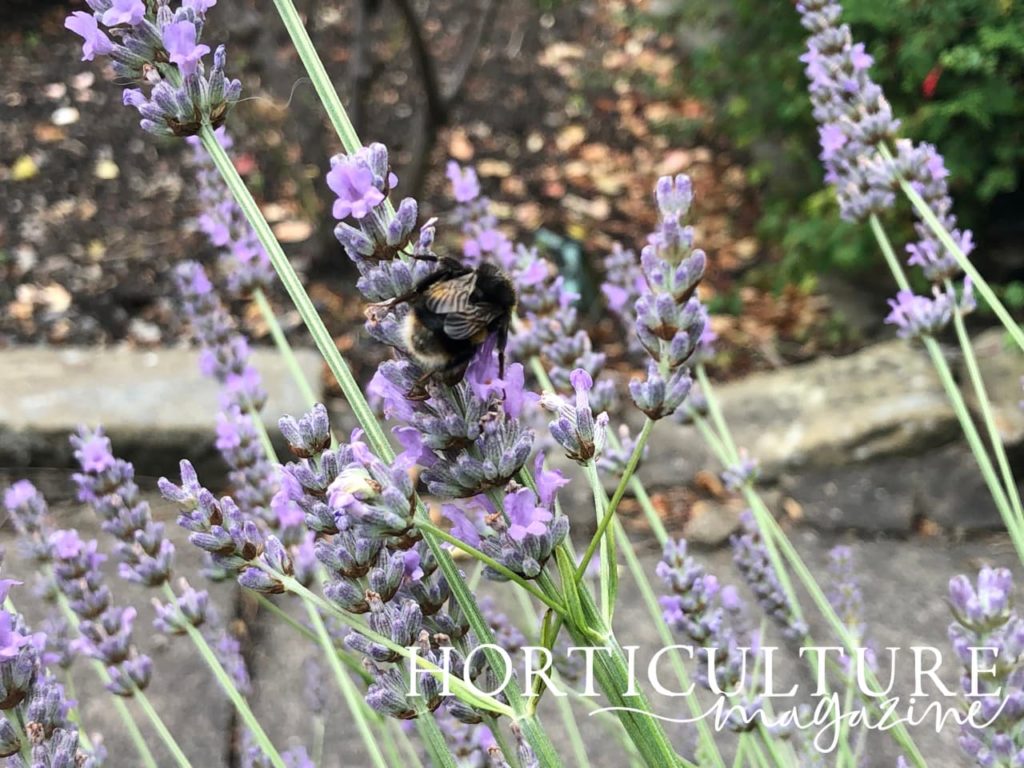
Taking cuttings can also be a good strategy where existing plants have become woody and leggy.
Lavender plants can sometimes (especially when not properly pruned) become overgrown and less vigorous and productive over time.
Taking cuttings from these plants means that you will be able to gain better replacements for them, and improve the quality of a lavender patch.
When To Take Lavender Cuttings
Lavender cuttings can be taken any time between June and September.
Those taken from fresh, green growth early in the season are called softwood cuttings.
Those taken a little later, from growth that is around a month old, are called semi-ripe cuttings and are categorised by the green growth having become firmer but not yet wood.

And those usually taken towards the end of the season are hardwood cuttings – though hardwood cuttings of older wood can be taken earlier in the season too.
- Softwood cuttings can be quickest to root, but can succumb to a range of issues, and may not be as resilient over time as cuttings taken a little later.
- Semi-ripe cuttings taken in summer generally have reasonably good chances of success and are likely to be the easiest type of cuttings for beginners.
- Hardwood cuttings take longer to root, and success rates can vary. But hardwood cuttings can bring more resilient new plants over time.
If you are new to propagating lavender, in my opinion, you are most likely to meet with success if you take semi-ripe cuttings in July or early August.
How To Take Softwood Or Semi-Ripe Cuttings
The idea when taking softwood or semi-ripe cuttings is to take material from the plant which is fresh, new and green.
1) Find A Side Shoot
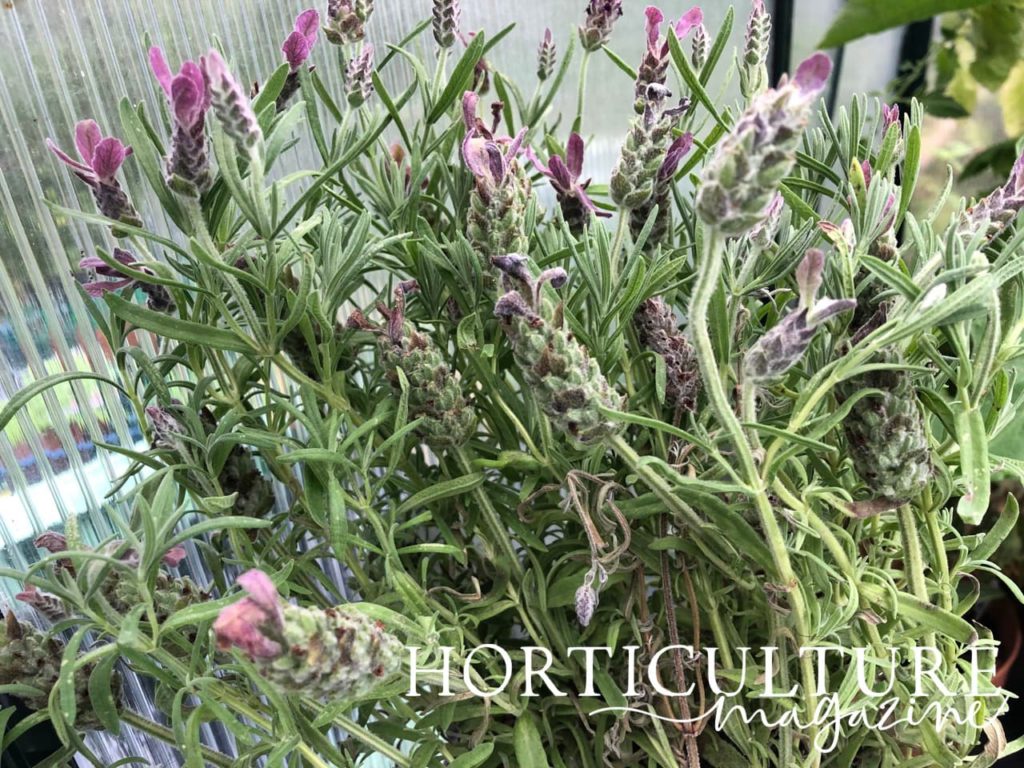
Seek out a fresh, non-flowering side shoot from a healthy lavender plant.
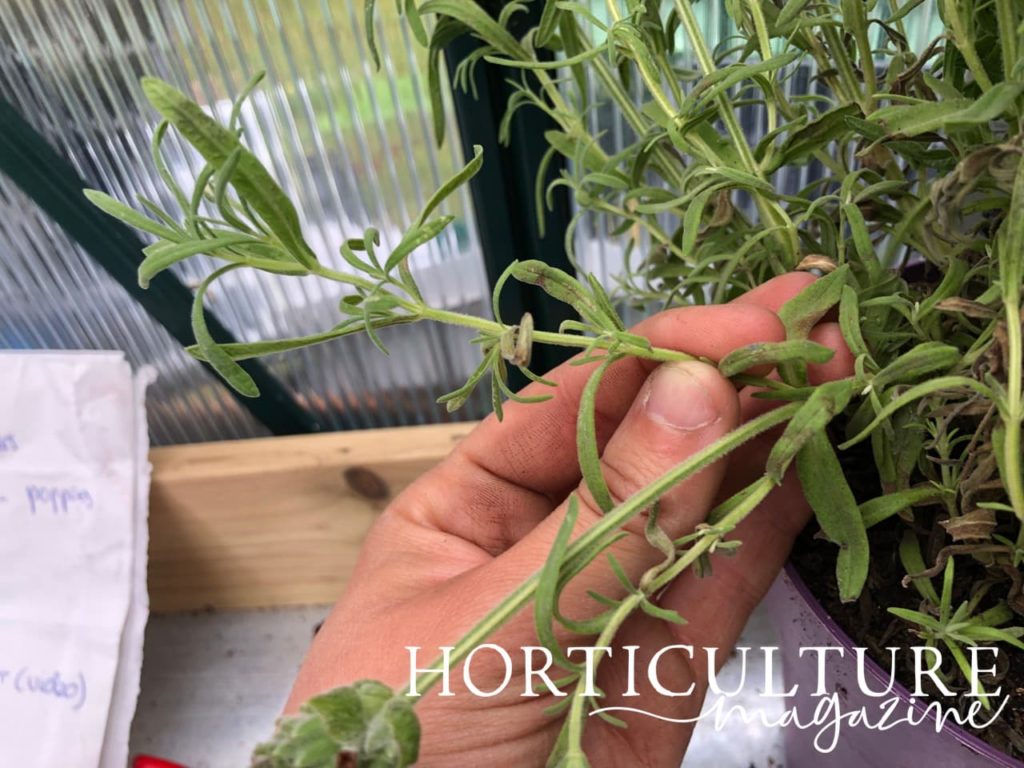
2) Pull From Main Stem
Gently pull the side shoot away from the main stem, ideally with a heel of bark attached.
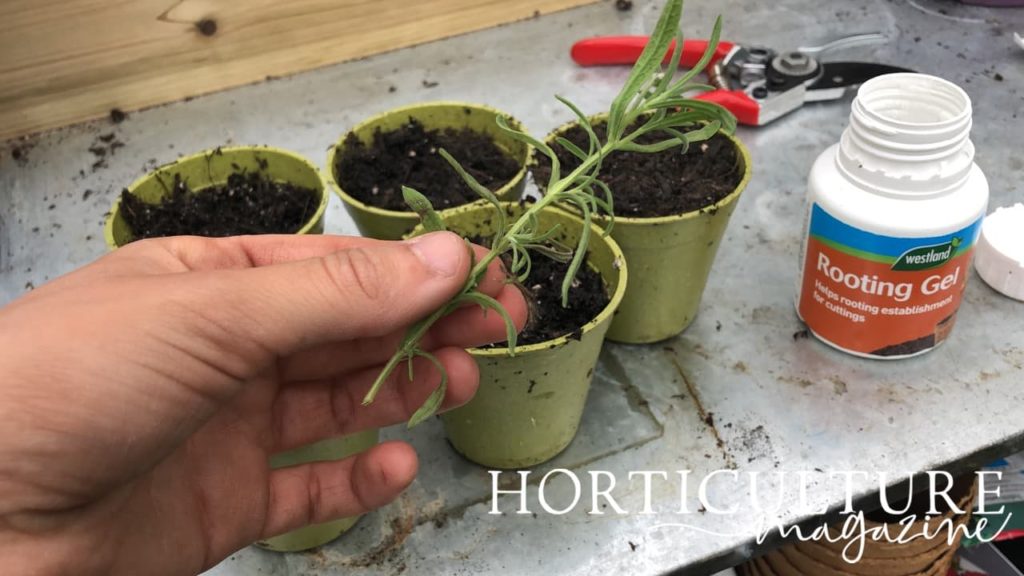
If the cutting does not have a heel, trim the base just below a leaf node.
3) Remove Leaves

Remove the leaves from the lower half of the cutting.
4) Dip In Rooting Hormone
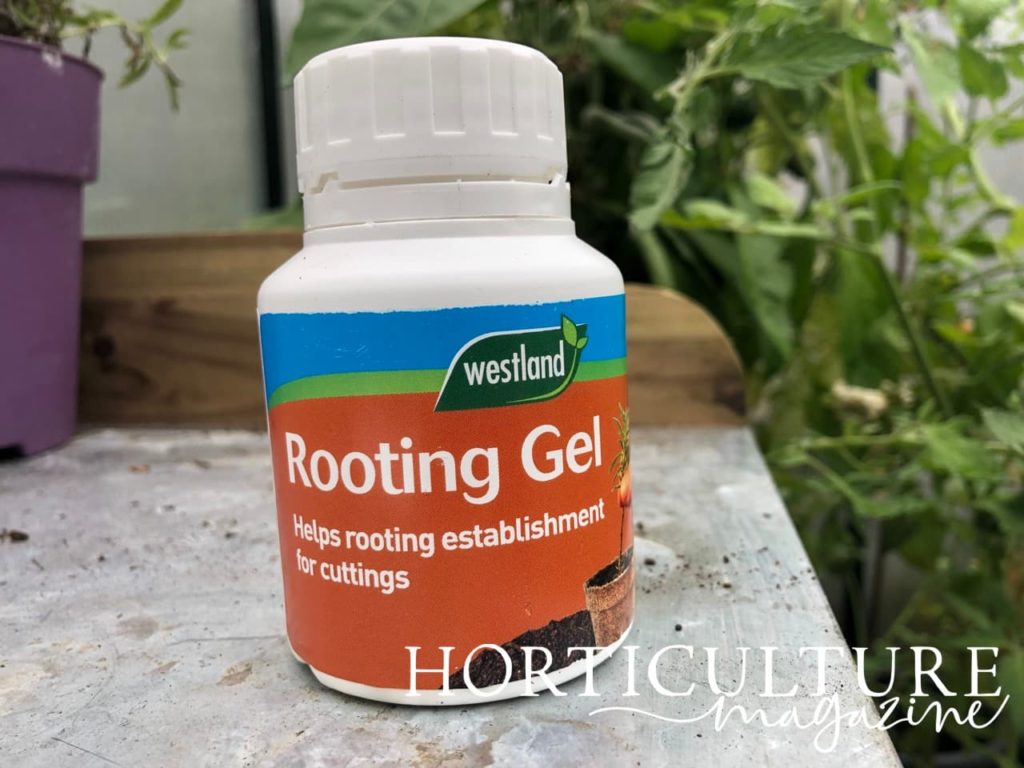
Dip the ends of your cuttings in rooting hormone.
This is optional but increases the chances of success.
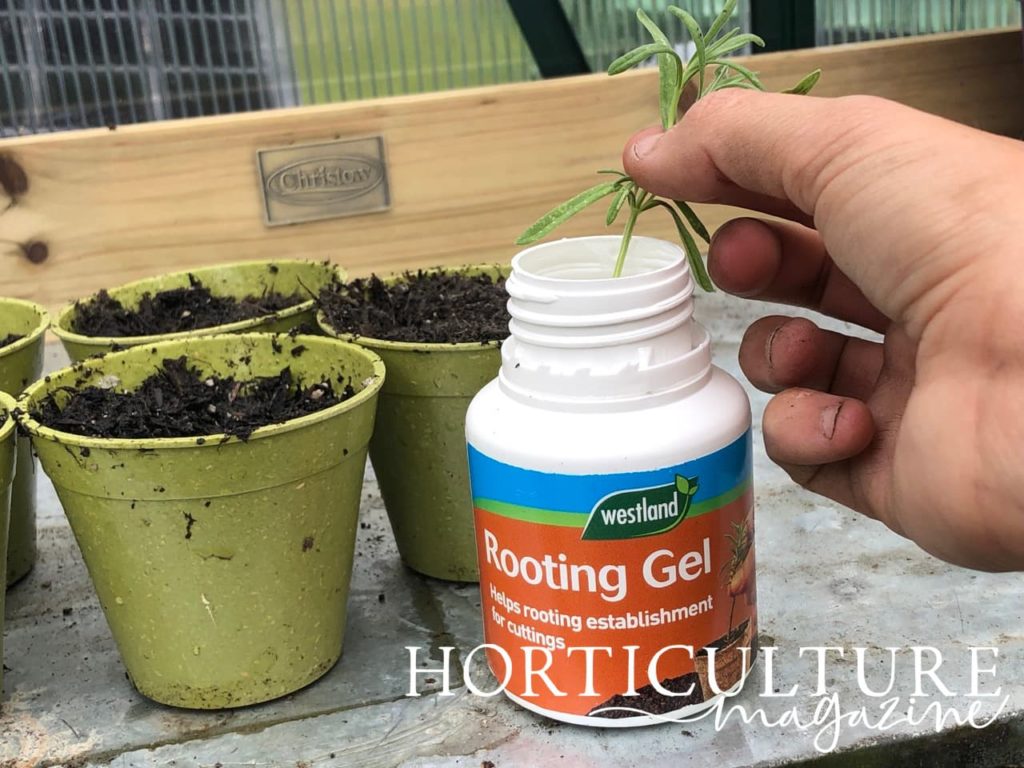
Push cuttings into a gritty potting mix around the edges of a small pot.
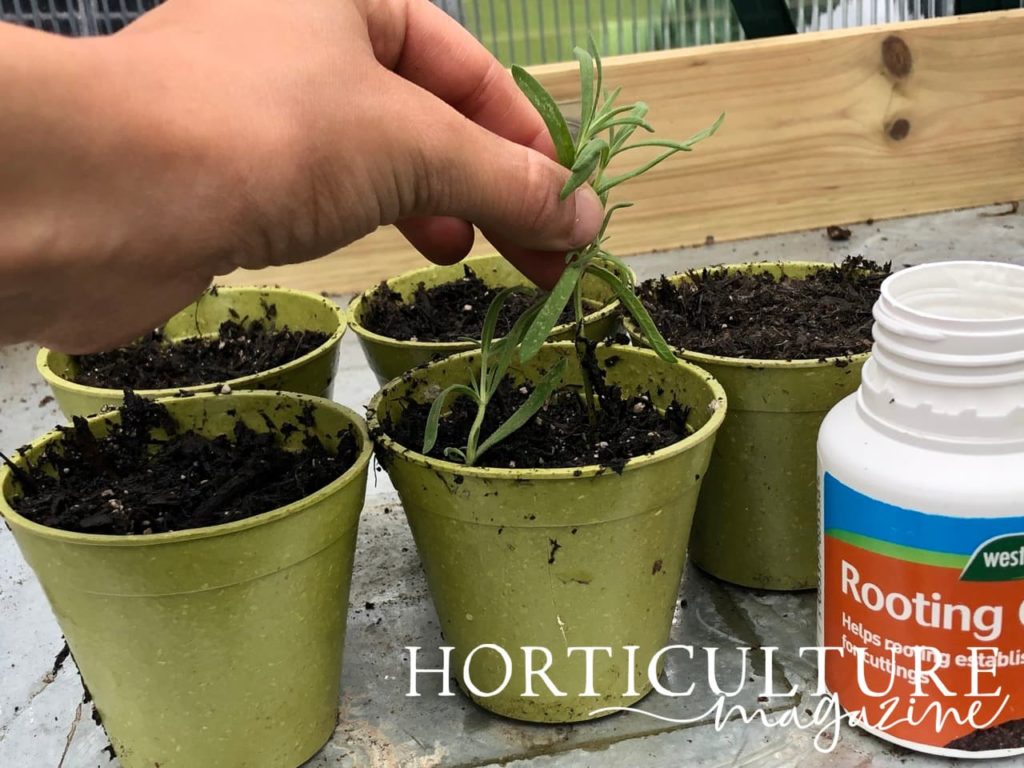
5) Place In A Warm, Humid Location
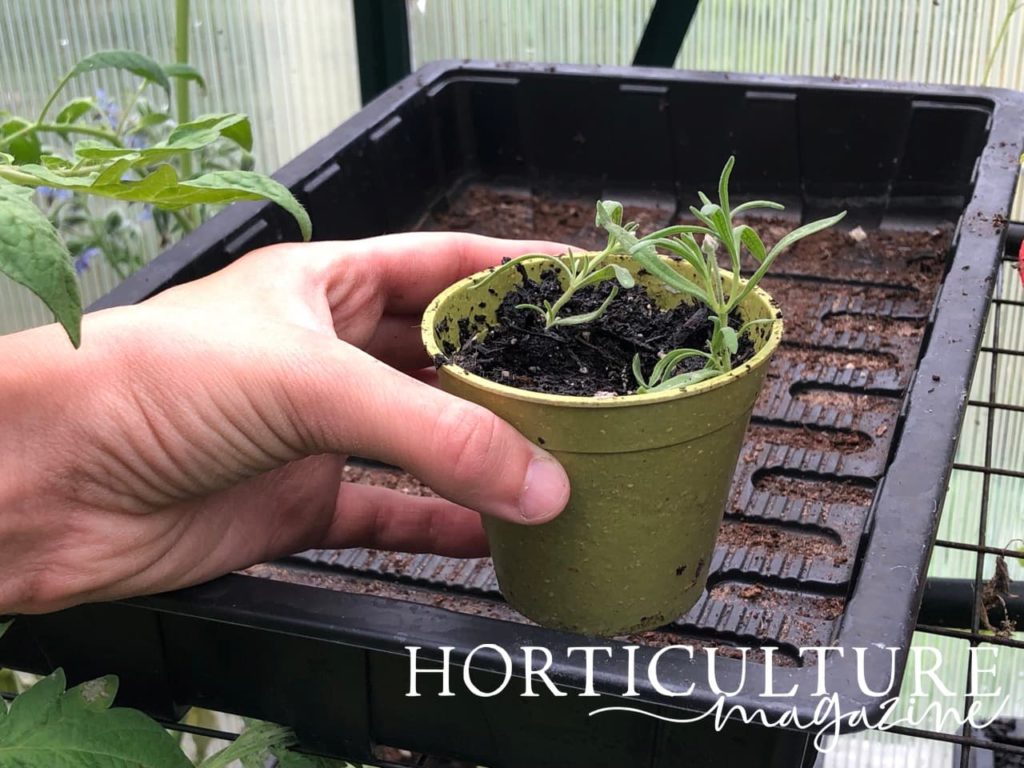
Water well and place the pot or pots in a warm, shaded, humid location.
If the location is not suitably humid, you can increase humidity by placing a glass, plastic bag or half a clear plastic drinks bottle over the top.

6) Separate Rooted Cuttings
After cuttings have rooted (usually 4-6 weeks) place each cutting into its own container.

Keep potted up cuttings in a cold frame, polytunnel or greenhouse over winter before planting out into their final growing positions the following spring.
How To Take Hardwood Lavender Cuttings
Hardwood cuttings are taken from nearer the base of the plant and are older wood. Otherwise, the steps and technique are the same as the above.
Just remember that hardwood cuttings may be much slower to take root.

Layering Lavender
If you want to make clones of a parent plant, cuttings are a great idea.
However, taking cuttings is not the only way to propagate your lavender plant.
Another propagation technique that can be used with lavender is called ‘layering’.
Layering involves bending stems down to the ground (or the soil in a container), rather than cutting them off.
The idea is to keep the stem below the soil surface so that new roots form along that portion.
This is easier with other plants than it is with lavender but can be the best option where the parent plant is older and woodier as once rooted, this technique can make more substantial plants which can be used to replant and refresh the existing lavender scheme.
To layer lavender:
- Choose a branch (or branches) close to the ground/ surface of the growing medium.
- Bend the branch down, and gently scar the portion that will be below the soil. Scrape off a section of the outer bark but keep the green cambium layer intact.
- Cover the scarred portion with at least 3-5cm of soil. Make sure that the soil/medium is free draining.
- Use a metal hoop, peg, or branches twig inserted in the soil to keep the branch in place.
- Cover the area with organic mulch to retain topsoil and moisture.
- After a couple of years, the below-ground section should have developed a strong root system, and the new plant can be severed from the parent plant.
Taking lavender cuttings or layering lavender is a great strategy if you want to gain new lavender plants for your garden.
By learning these techniques, once you have a single specimen of a certain type of plant in your garden, you will far less frequently have to buy more of the same type.
Rather than buying new plants, you would be able to make your own. And this is always a good thing to do as much as possible in a sustainable, eco-friendly garden.
